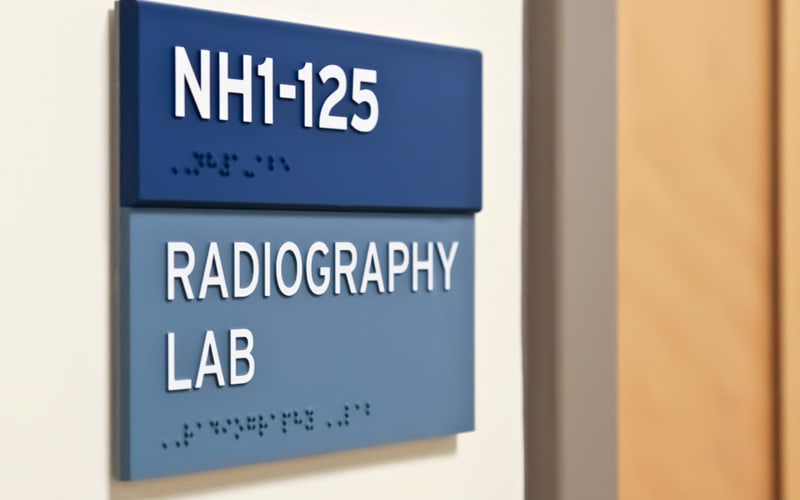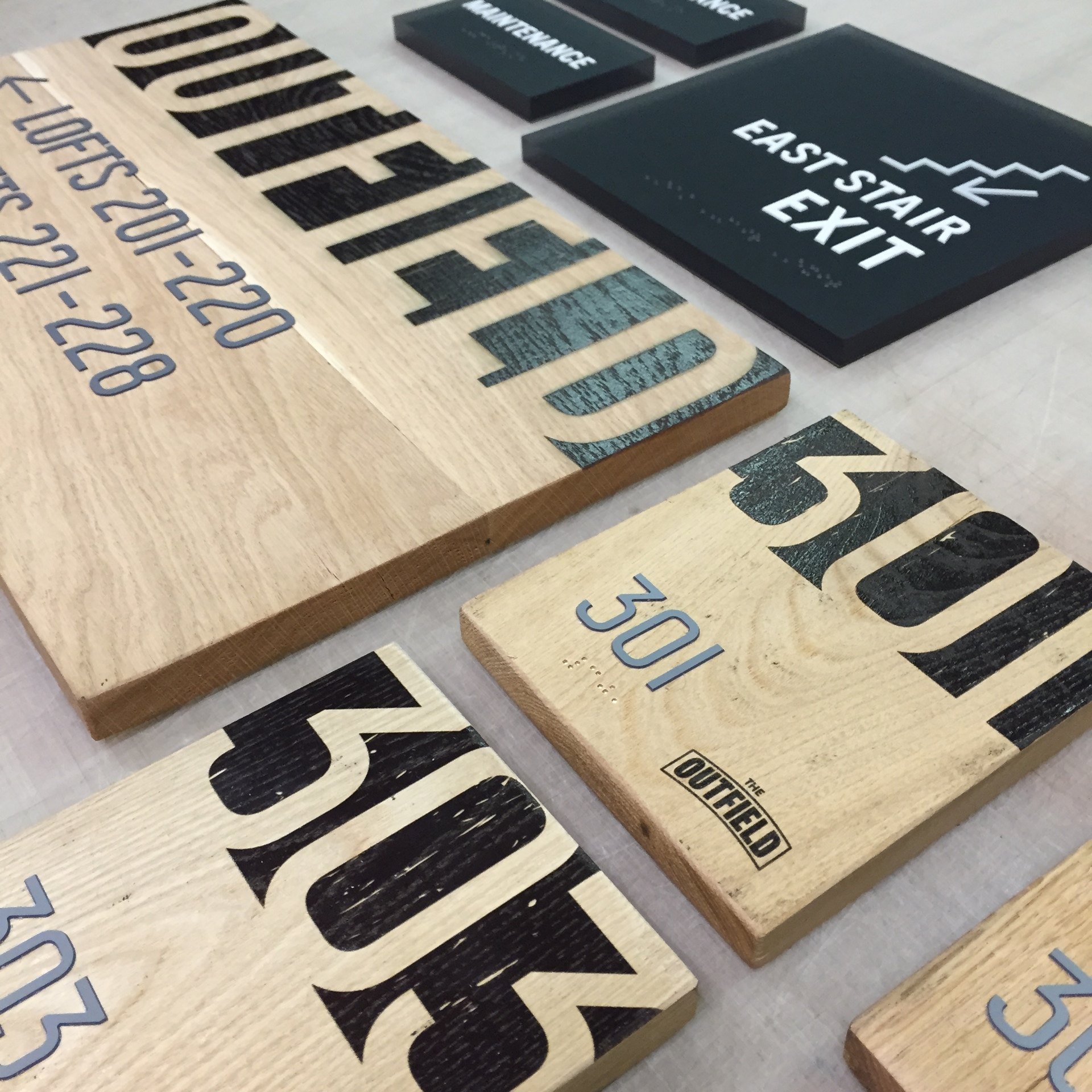Exploring the Trick Functions of ADA Indications for Enhanced Access
In the realm of ease of access, ADA indications work as quiet yet effective allies, making sure that rooms are inclusive and navigable for individuals with disabilities. By incorporating Braille and responsive elements, these signs damage obstacles for the visually damaged, while high-contrast shade systems and understandable font styles deal with varied aesthetic needs. Additionally, their strategic placement is not arbitrary however rather a computed initiative to facilitate smooth navigating. Yet, beyond these features lies a much deeper narrative about the evolution of inclusivity and the continuous commitment to creating equitable spaces. What extra could these signs indicate in our quest of universal availability?
Value of ADA Compliance
Making sure conformity with the Americans with Disabilities Act (ADA) is crucial for fostering inclusivity and equivalent access in public areas and offices. The ADA, passed in 1990, mandates that all public centers, companies, and transportation solutions fit people with impairments, ensuring they delight in the very same legal rights and chances as others. Compliance with ADA criteria not only fulfills legal commitments however also enhances an organization's online reputation by demonstrating its commitment to diversity and inclusivity.
One of the vital elements of ADA compliance is the execution of accessible signage. ADA indicators are developed to guarantee that individuals with impairments can conveniently navigate with structures and areas.
In addition, sticking to ADA policies can minimize the risk of lawful repercussions and prospective fines. Organizations that fail to comply with ADA standards may deal with lawsuits or charges, which can be both destructive and economically troublesome to their public picture. Hence, ADA compliance is integral to fostering a fair atmosphere for everyone.
Braille and Tactile Components
The incorporation of Braille and tactile components into ADA signs embodies the concepts of ease of access and inclusivity. These features are crucial for people who are blind or visually impaired, enabling them to navigate public rooms with higher freedom and self-confidence. Braille, a responsive writing system, is crucial in providing composed information in a style that can be quickly regarded through touch. It is normally placed below the equivalent message on signs to guarantee that people can access the info without visual help.
Responsive aspects expand beyond Braille and include raised symbols and characters. These parts are made to be noticeable by touch, permitting individuals to recognize area numbers, bathrooms, exits, and other vital locations. The ADA establishes certain standards concerning the dimension, spacing, and placement of these responsive elements to maximize readability and guarantee uniformity across various settings.

High-Contrast Color Systems
High-contrast color design play a crucial role in enhancing the presence and readability of ADA signage for individuals with visual impairments. These schemes are essential as they make best use of the distinction in light reflectance in between message and history, guaranteeing that indicators are conveniently discernible, even from a range. The Americans with Disabilities Act (ADA) mandates making use of specific color contrasts to accommodate those with limited vision, making it a critical element of conformity.
The efficacy of high-contrast shades lies in their capacity to stick out in numerous lights problems, consisting of dimly lit settings and locations with glow. Usually, dark message on a light history or light text on a dark background is used to attain optimum comparison. For circumstances, black text on a yellow or white background supplies a raw aesthetic difference that assists in fast acknowledgment and comprehension.

Legible Fonts and Text Dimension
When thinking about the design of ADA signs, the selection of clear fonts and appropriate text dimension can not be overstated. These elements are essential for ensuring that indications are available to individuals with visual disabilities. The Americans with Disabilities Act (ADA) mandates that font Get the facts styles have to be not italic and sans-serif, oblique, script, very attractive, or of unusual form. These requirements assist make certain that the text is easily understandable from a range and that the characters are distinct to diverse audiences.
The dimension of the message likewise plays a pivotal duty in availability. According to ADA standards, the minimal message height should be 5/8 inch, and it ought to boost proportionally with viewing distance. This is specifically vital in public spaces where signage requirements to be read swiftly and precisely. Uniformity in text dimension adds to a cohesive visual experience, helping individuals in navigating settings successfully.
Furthermore, spacing between lines and letters is essential to clarity. Adequate spacing protects against characters from showing up crowded, boosting readability. By sticking to these requirements, designers can significantly improve availability, making certain that signs serves its designated purpose for all people, no matter of their visual abilities.
Reliable Positioning Techniques
Strategic positioning of ADA signs is necessary for taking full advantage of ease of access and ensuring conformity with legal requirements. Appropriately positioned indications direct people with disabilities successfully, facilitating navigating in public areas. Trick factors to consider include elevation, visibility, and closeness. ADA standards state that indicators must be mounted at a height in between 48 to 60 inches from the ground to guarantee they are within the line of view for both standing and seated people. This basic elevation variety is essential for inclusivity, enabling mobility device individuals and individuals of varying heights to access details easily.
In addition, indicators have visit to be put beside the lock side of doors to enable easy identification prior to access. This placement aids individuals find areas and areas without blockage. In instances where there is no door, signs need to be situated on the closest nearby wall. Consistency in indicator positioning throughout a facility enhances predictability, decreasing complication and enhancing overall individual experience.

Verdict
ADA indications play an important try this web-site role in advertising accessibility by integrating functions that address the requirements of individuals with specials needs. Incorporating Braille and tactile elements makes certain important info comes to the visually damaged, while high-contrast color design and legible sans-serif font styles enhance presence across different lights conditions. Effective placement methods, such as ideal placing heights and strategic areas, even more promote navigation. These aspects jointly promote an inclusive setting, underscoring the significance of ADA compliance in making certain equal access for all.
In the realm of access, ADA signs offer as quiet yet effective allies, making certain that rooms are navigable and comprehensive for people with handicaps. The ADA, passed in 1990, mandates that all public facilities, companies, and transportation services suit people with disabilities, ensuring they appreciate the very same rights and opportunities as others. ADA Signs. ADA signs are made to guarantee that individuals with specials needs can easily browse through spaces and structures. ADA guidelines state that indications must be installed at a height between 48 to 60 inches from the ground to ensure they are within the line of sight for both standing and seated individuals.ADA signs play a crucial function in promoting accessibility by incorporating features that address the needs of individuals with impairments